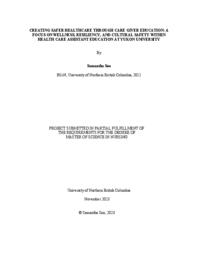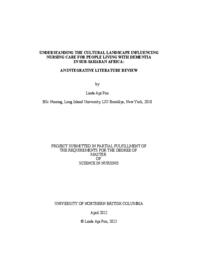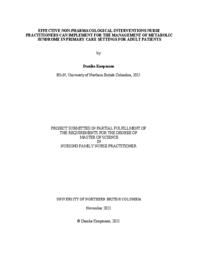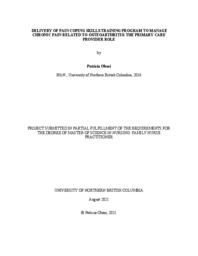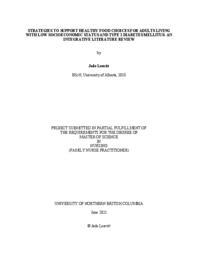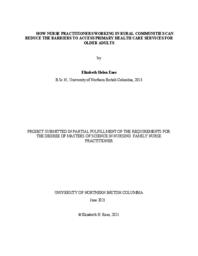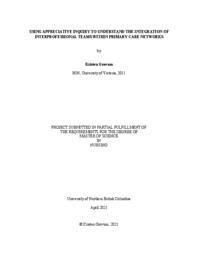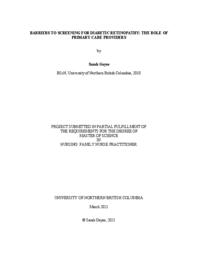Marceau, Raelene
Person Preferred Name
Raelene Marceau
Related Works
Content type
Digital Document
Origin Information
Content type
Digital Document
Description / Synopsis
This project aimed to enhance the foundational knowledge and skills related to wellness, resiliency, and cultural safety education for students in the Health Care Assistant (HCA) program at Yukon University. By revising the HCA 111 course, the project aimed to prepare students for success as front-line caregivers. Project objectives included conducting a literature review, engaging with Scandinavian colleges and universities, conversations with employed Yukon HCAs, consulting with local Indigenous knowledge holders on course revisions, and revising and delivering the course. This project addresses pressing needs in the Yukon healthcare system such as caregiver burnout and Indigenous-specific racism and discrimination. The revisions incorporated self-awareness learning, Elder-led learning, land-based learning, community experiential learning, and cultural safety education. The socio-ecological model and the First Nations perspective on health and wellness model guided the course revisions through a Two- Eyed Seeing approach in conjunction with cultural principles of meaningful relationships (9 Rs) and flexible content delivery to promote student wellness, resilience, and cultural safety. This project contributes to creating safer health care environments for both caregivers and Yukon Indigenous health care recipients.
Origin Information
Content type
Digital Document
Description / Synopsis
With the rise, worldwide, in numbers of people rapidly surviving into older adulthood, the increasing prevalence of dementia has become a global public health priority of significance. The most alarming increase in dementia burden occurs in low and middle-income countries (LMIC), especially in Sub Saharan Africa (SSA). The purpose of this integrative review is to provide evidence-informed recommendations, based on the current literature that guides nurses practicing in SSA on how to safely care for people living with dementia. Cultural, social, and community perceptions, beliefs, and attitudes about dementia affect people living with dementia in profound ways. As such, culture-specific understandings need to be visible in the provision of quality nursing care across the diverse and complex landscape of urban and rural SSA. Whittemore and Knalf’s (2015) integrative literature review methodology and methods were used to conduct searches within CINAHL, PsycINFO, MEDLINE, and PubMed databases for relevant studies and systematic reviews by applying appropriate medical subject headings. Developed inclusion and exclusion criteria systematically guided the process of work through the literature search results. This process led to narrowing the focus of the body of literature and culminated in the selection of 17 peer-reviewed research articles of studies originating from seven SSA countries: Nigeria, South Africa (SA), Democratic Republic of the Congo (DRC), Uganda, Ghana, Kenya, and Tanzania. The set of articles were then each individually analyzed and collectively synthesized to answer the research question: How do cultural, social, and community perceptions, beliefs, and attitudes related to dementia affect people living with dementia and the quality of nursing care provided in Sub Saharan Africa? Four key themes emerged following the extraction of data from the articles: 1) nurses’ limited knowledge of how people live with dementia, especially with the cultural belief of dementia as witchcraft, 2) nurses’ misguided understanding of what help and health-seeking behaviors people experiencing dementia exhibit, 3) nurses’ lack of awareness of dementia-associated stigma and its influence on suffering and illness, and 4) nurses’ need for education related to the provision of nursing best practices when caring for people with dementia. The need for knowledge, understanding, awareness, and education for nurses caring for people living with dementia across Sub-Saharan African communities remains pertinent. There is also a need for these actions to extend deep into communities where traditional knowledge keepers, faith healers, and other healthcare professionals could be allies in supporting the pluralistic and collaborative provision of dementia care. Within SSA, nurses have the capacity to develop and implement low‐resourced nonpharmacological interventions to people living with dementia, and to partner with families in the achievement of patient-centered care. Nurses also have the capacity to provide leadership in orchestrating short and long-term initiatives that shift societal cultural and dementia understanding through practice, education, research, and policy recommendations.
Origin Information
Content type
Digital Document
Description / Synopsis
Metabolic syndrome consists of a combination of abdominal obesity, dyslipidemia, hypertension, and elevated glucose levels. Metabolic syndrome is prevalent in North America with upwards of 20% of adults meeting criteria for the condition. It is associated with increased risk of morbidity and mortality, particularly cardiovascular disease, stroke, and renal failure. Its prevalence and widespread consequences have major implications for overall burden of disease and cost on the health care system. First-line treatments for management of metabolic syndrome and its associated individual components require a multifaceted approach including nonpharmacological therapy. This integrative review seeks to answer the question: “What are effective non-pharmacological interventions nurse practitioners can implement for the management of metabolic syndrome in primary care settings for adult patients?” The Whittemore and Knafl (2005) method was followed to ensure a thorough process to which the findings and conclusion are described. There are few guidelines offering effective means of implementing non-pharmacological management of this disease. This review assesses the literature and identifies 13 articles which address effective non-pharmacological interventions in the management of MetS. These interventions were grouped into four categories including, dietary interventions, exercise interventions, psychological support, and a combined intervention approach. The lengths of intervention varied from 3 months to 5 years. Providers responsible for delivery of the interventions varied and were not limited to nurse practitioners. The outcomes of significance included improved anthropometric and serological measures, as well as improved participant motivation and behaviour change. For optimal outcomes of patients, the management of metabolic syndrome in a primary care setting requires a multifaceted and patient-centred approach.
Origin Information
Content type
Digital Document
Description / Synopsis
Osteoarthritis (OA) is the primary form of arthritis that affects a large portion of the Canadian population. With expected increases in OA prevalence over time, the magnitude of outcomes related to inadequate pain control will place further burdens on society and healthcare resources. Pain Coping Skills Training (PCST) is an intervention protocol derived from cognitive behavioural therapy and has traditionally been delivered by clinical psychologists to manage chronic pain related to OA. However, few providers in the primary care setting are trained in PCST. The lack of trained primary care providers creates a barrier to patient access in the community setting, which should be addressed. An integrative literature review has been conducted to identify if primary care providers, who work in primary care settings, can deliver PCST interventions to decrease pain interference and improve quality of life outcomes in adult patients diagnosed with OA. The results are discussed within the context of Canada's primary care practice. Eleven articles were reviewed using Whittemore and Knafl’s approach to the integrative literature review. The results suggest that PCST interventions are both practical and possible among providers that do not possess a background in mental health specialization. Thus, primary care providers are encouraged to obtain educational competency to deliver this effective therapy to manage the adverse psychological effects on chronic pain related to OA. This way, providers can offer a biopsychosocial approach in managing OA while also playing an essential role in improving access to PCST interventions in the primary care setting. Recommendations for facilitating the uptake of PCST interventions are discussed, and specific strategies for its use in primary care are presented.
Origin Information
Content type
Digital Document
Description / Synopsis
Type 2 diabetes mellitus (T2DM) is an increasing concern in Canada, with low socioeconomic status being a major risk factor. This review explores strategies to improve food access that promote healthy food choices among people experiencing food insecurity and living with T2DM. Whittemore and Knalf’s (2015) integrative literature review methodology was used to extract and analyse the evidence. Four key strategies emerged: 1) promoting healthy food affordability through incentives and disincentives, 2) understanding effective and ineffective food interventions, 3) enhancing nutritional education in the standard of care, and 4) manifesting empowerment through self-efficacy and diabetes management. These strategies can be applied by nurse practitioners within primary care. Aligned with a population health approach, they can direct practice, education, and research through healthy public policy focused on reducing the incidence of T2DM, particularly in people experiencing food insecurity.
Origin Information
Content type
Digital Document
Description / Synopsis
Due to the aging population worldwide, need to access primary health care (PHC) services is increasing. Older adults are at a heightened risk of developing chronic diseases, poor health outcomes, and increased emergency department visits. Living in rural communities also increases the risk of chronicity for older adults due to a lack of PHC resources. However, there is limited information available to provide insight into how healthcare providers can reduce barriers to access to PHC for older adults. As PHC providers, nurse practitioners are in a position to implement strategies to reduce barriers older adults in rural communities face with accessing PHC services. An integrative literature review was conducted to identify barriers nurse practitioners within rural communities can reduce to improve older adults’ access to PHC services. An analysis of the literature revealed the complexity of barriers that prevent older adults from accessing PHC services in rural communities. Environmental, systemic, and individual barriers were reviewed alongside programs and interventions relevant to reducing barriers in the findings. Findings from the literature review suggested strategies to reduce these barriers, which nurse practitioners can promote in the PHC setting. These strategies include virtual care, home visits, nurse practitioner-models of care, interdisciplinary teamwork, and role clarification. In addition to these strategies, implications for practice, limitations of the study and suggestions for future research are discussed.
Origin Information
Content type
Digital Document
Description / Synopsis
Over the past fifteen years, primary care networks have been established across Canada; spaces whereby people can access a first point of contact with healthcare professionals focused on chronic disease management, health maintenance, and prevention. British Columbia has recently launched a model of primary care networks and interprofessional teams in response to a current health system challenged with demands related to an aging population and increased prevalence of chronic disease and disability. Using appreciative inquiry for understanding organizational social system change, information was gathered to explore the strengths and directional change needed as shared by primary care providers and case managers working in a Vancouver Island health authority primary care network. The purpose of the project was to understand how these providers could work more effectively within integrated interprofessional teams. Actions focused on the process of facilitating connection, communication, relationship, collaboration and autonomy within these networks are explicated.
Origin Information
Content type
Digital Document
Description / Synopsis
Diabetes is a serious health concern that affects millions of people world-wide. The comorbidities and complications of diabetes are complex and require awareness within the healthcare system. Diabetic retinopathy affects a significant number of patients living with diabetes. Early detection through screening is recognized as the standard of care, in order to assess and monitor for diabetic retinopathy progression. Unfortunately, screening services are not always accessed, especially within the suggested time frames and frequencies. Currently there is limited data regarding the barriers that exist for individuals to access these crucial screening services. An integrative literature review approach was conducted to answer the research question: What strategies can nurse practitioners in the primary care setting use to promote screening for people living with diabetes to reduce their risk and progression to blindness from diabetic retinopathy? Four themes emerged from the findings which provided insight into determinants that affect diabetic retinopathy screening adherence: structural barriers to care, socioeconomic conditions, emotional barriers to accessing healthcare, and knowledge deficits. Discussion of three recommendations for primary care practice focus on: reassessing screening methods and intervals, activity sharing, and providing education. Implications for future research to enhance patient care are outlined.
Origin Information


